Anatomy > STUDY GUIDE > Rasmussen College - MA 279 Module 07 Case Study/MA 279 Module 07 Case Study_Verified Answers. (All)
Rasmussen College - MA 279 Module 07 Case Study/MA 279 Module 07 Case Study_Verified Answers.
Document Content and Description Below
Module 07 Case Study • Question 1 1 out of 1 points Kelly is a 36-year-old female who has a history of type 2 diabetes, several respiratory infections as a child, and two full-term pregnanc... ies (5 and 7 years ago). Two days ago, she began feeling a burning sensation when urinating. Her pain is progressively getting worse. Kelly assumes that she has a urinary tract infection (UTI) and makes an appointment at her primary clinic to seek relief. A urinary tract infection could affect all of the following organs, except: • Question 2 0 out of 1 points Kelly’s physician orders a urinalysis. If she has a UTI, which of the following will most likely be abnormal? • Question 3 1 out of 1 points Having female anatomy is a major risk factor for UTIs. Briefly describe, in your own words, why this is true. • Question 4 1 out of 1 points Aside from being female, which other risk factor is mentioned in Kelly’s history? • Question 5 1 out of 1 points Kelly’s physician determines that her infection has reached her bladder. What is this called? • Question 6 1 out of 1 points Aside from Kelly’s complaint, which other symptoms are likely for her condition? (Select all that apply.) • Question 7 1 out of 1 points Which of the following would be a sign that Kelly’s UTI has reached her kidneys? • Question 8 1 out of 1 points Which of the following choices is the most common cause of UTIs? • Question 9 1 out of 1 points Kelly will likely be prescribed short-course antibiotics for treatment. She may also be prescribed an analgesic. How would this help her, physiologically? • Question 10 0 out of 1 points List and describe 3 steps Kelly can take to prevent UTIs in the future. • Question 11 1 out of 1 points Daniel is a 52-year-old male with a history of obesity and diabetes. He had gastric bypass surgery 6 years ago and has been maintaining normal blood glucose levels and a BMI of 25 for the last 4 years. Daniel was able to stop taking medication for his diabetes, but still takes a daily multivitamin. He has had symptoms of Irritable Bowel Syndrome intermittently for 6 months, including abdominal pain and constipation. Within the last week, he has developed new symptoms that are more severe than the abdominal pain in the past. Daniel’s pain radiates into his groin and inferior to the ribs on his right side. The pain fluctuates in intensity, but is so severe that it’s debilitating at times. This morning, his pain was accompanied by nausea and vomiting, so he decided to seek emergency care. The emergency department physician suspects that Daniel may have kidney stones. Where could the kidney stone be located? • Question 12 1 out of 1 points An x-ray confirms the presence of multiple kidney stones. If Daniel is not treated, what are possible complications? List and briefly describe 2 possible complications. • Question 13 1 out of 1 points Why might Daniel’s doctor ask him about his diet? Briefly explain how his diet might be related to his condition. • Question 14 1 out of 1 points Aside from the symptoms mentioned in Daniel’s history, which of the following are common symptoms of nephrolithiasis? (Select all that apply.) • Question 15 1 out of 1 points Why might Daniel’s doctor recommend that he stop taking his daily multivitamin? • Question 16 1 out of 1 points Which parts of Daniel’s history contribute to his risk for kidney stones? • Question 17 1 out of 1 points Kidney stones have many causes. The stones are commonly composed of all the following substances, except: • Question 18 0 out of 1 points Daniel has small stones that are lodged in the left renal pelvis. His doctor recommends passing them naturally. Which of the following choices describes the path that these stones must take to exit the body? • Question 19 1 out of 1 points Daniel has a large stone lodged in his right ureter that requires treatment via a procedure called extracorporeal shockwave lithotripsy. Which of the following statements describes this procedure? • Question 20 1 out of 1 points List and briefly describe 3 steps Daniel can take to prevent future renal lithiasis. [Show More]
Last updated: 1 year ago
Preview 1 out of 4 pages
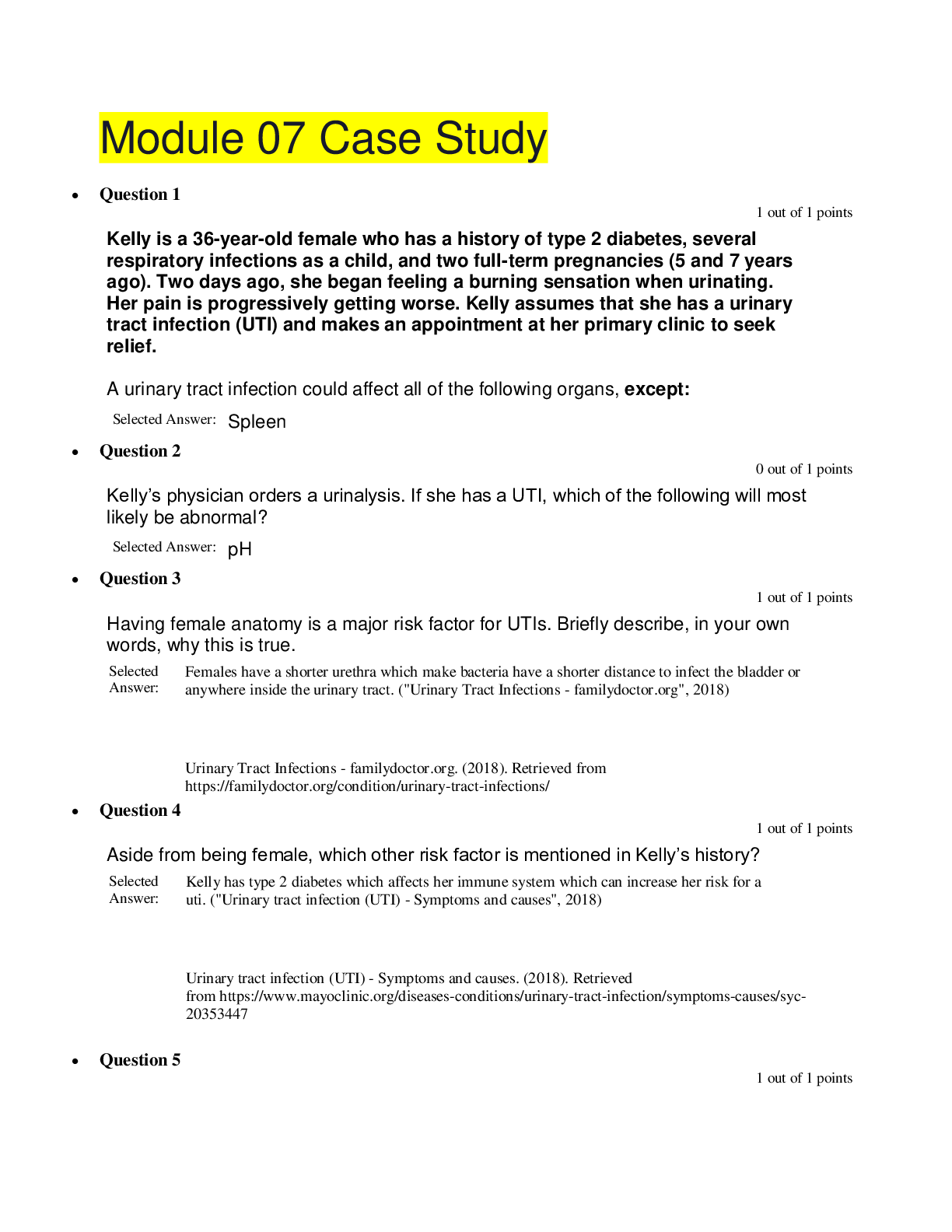
Reviews( 0 )
Document information
Connected school, study & course
About the document
Uploaded On
Aug 06, 2020
Number of pages
4
Written in
Additional information
This document has been written for:
Uploaded
Aug 06, 2020
Downloads
0
Views
165

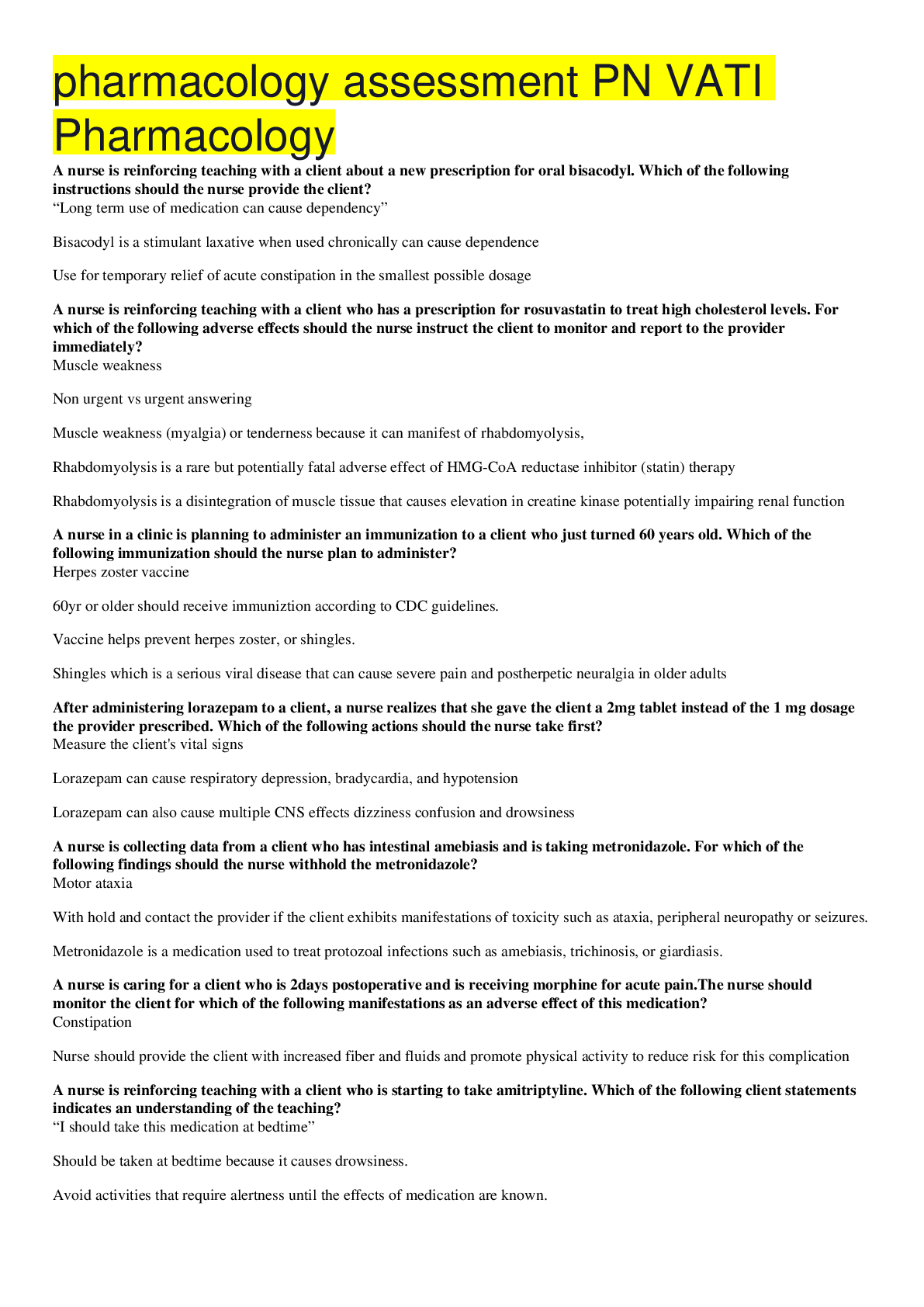
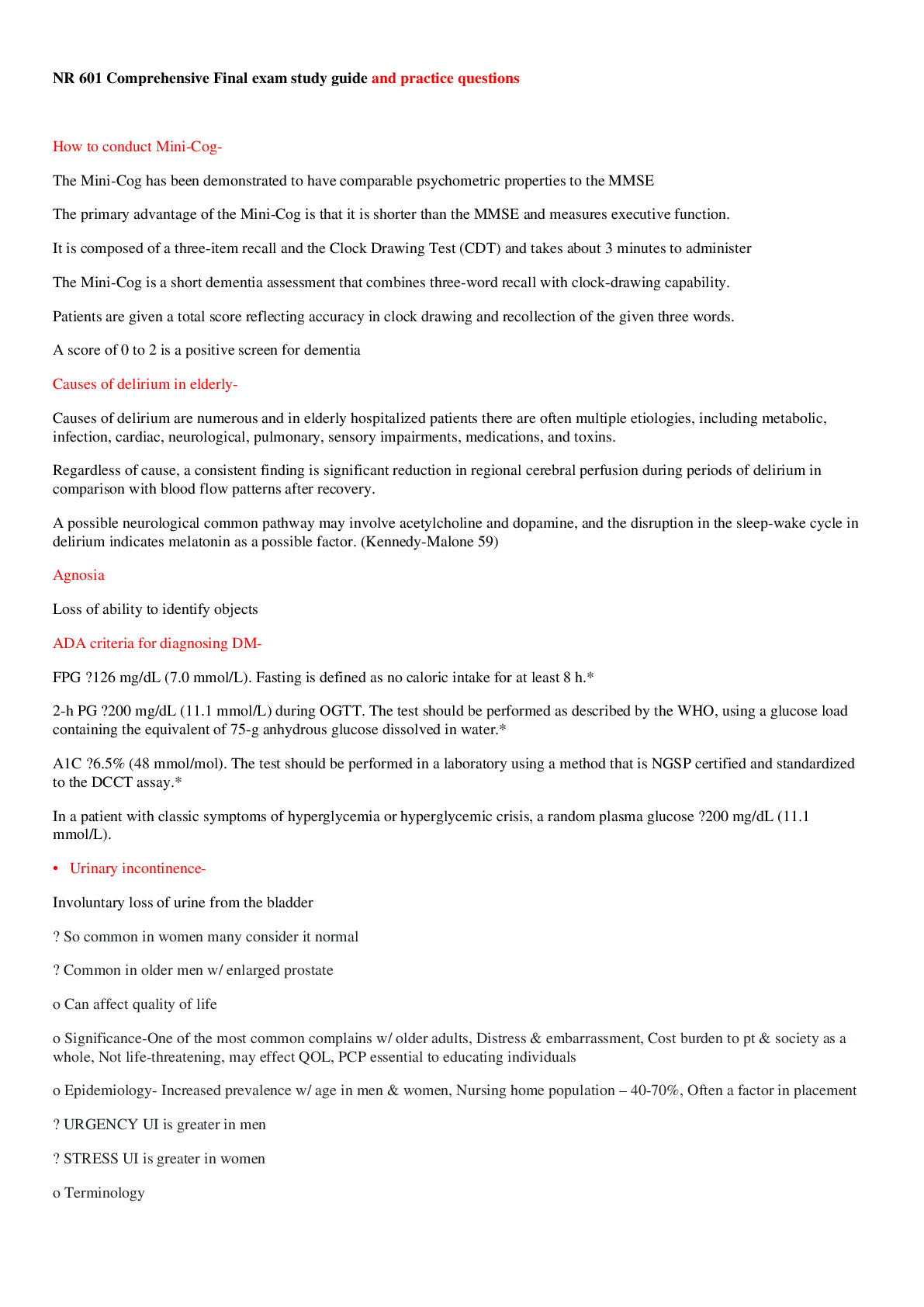
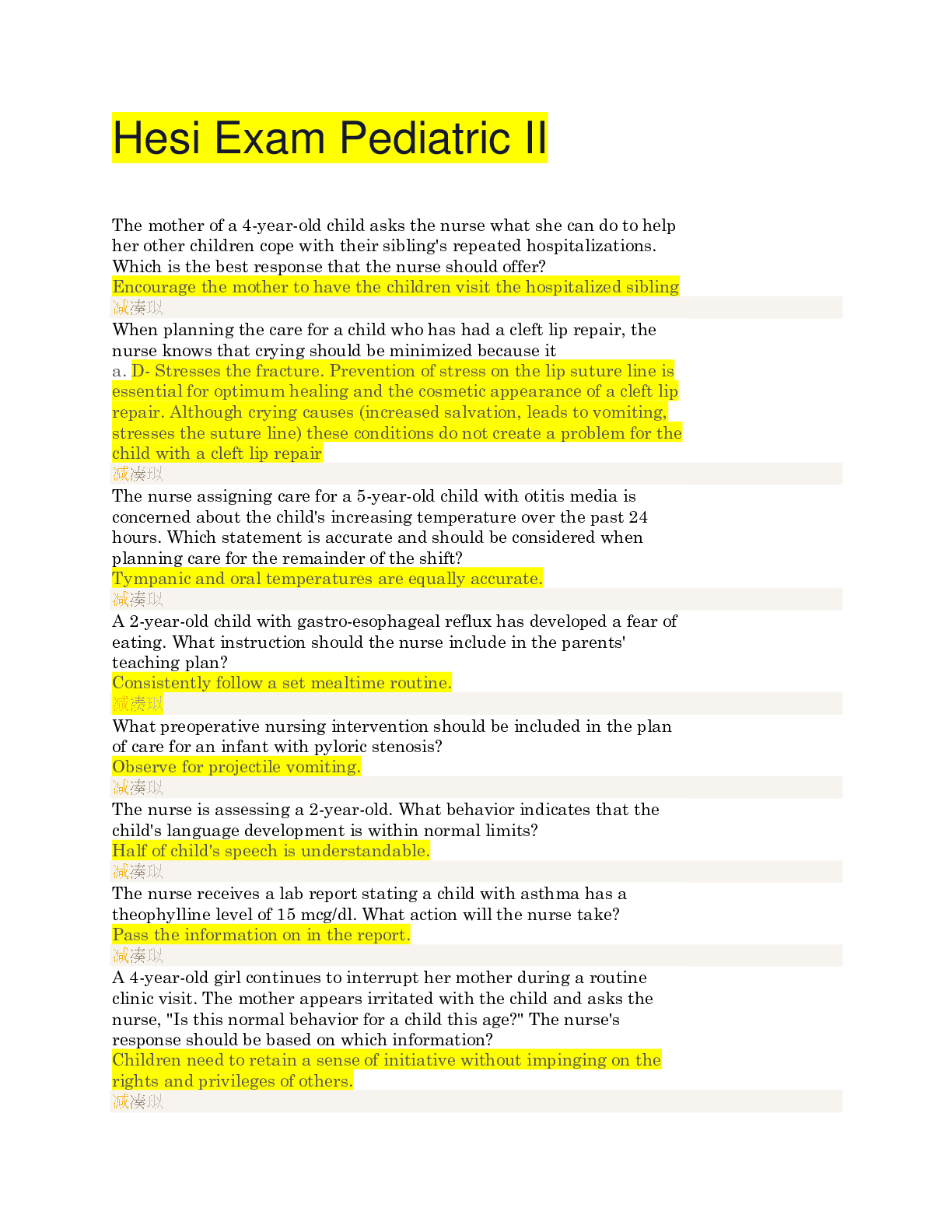




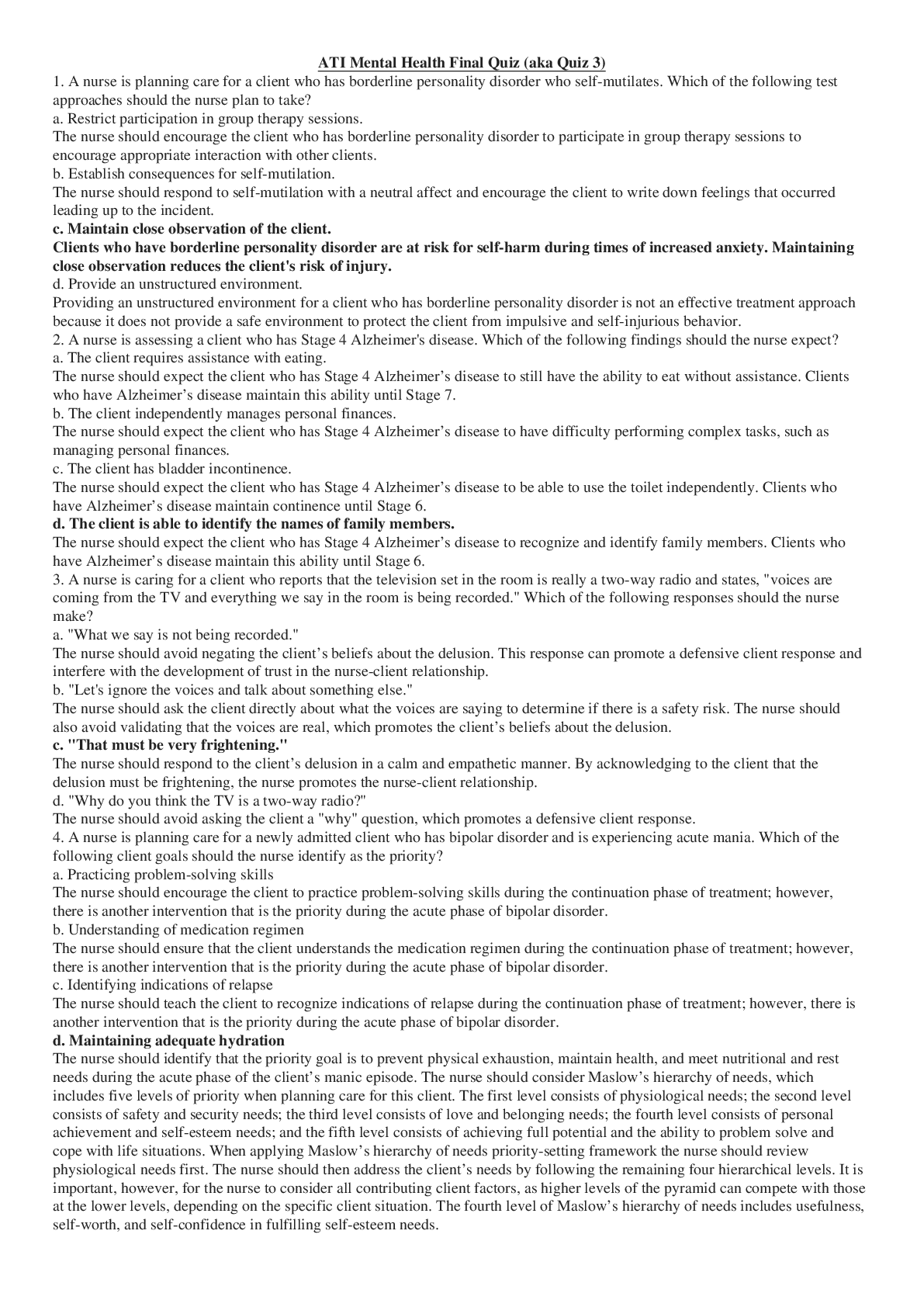

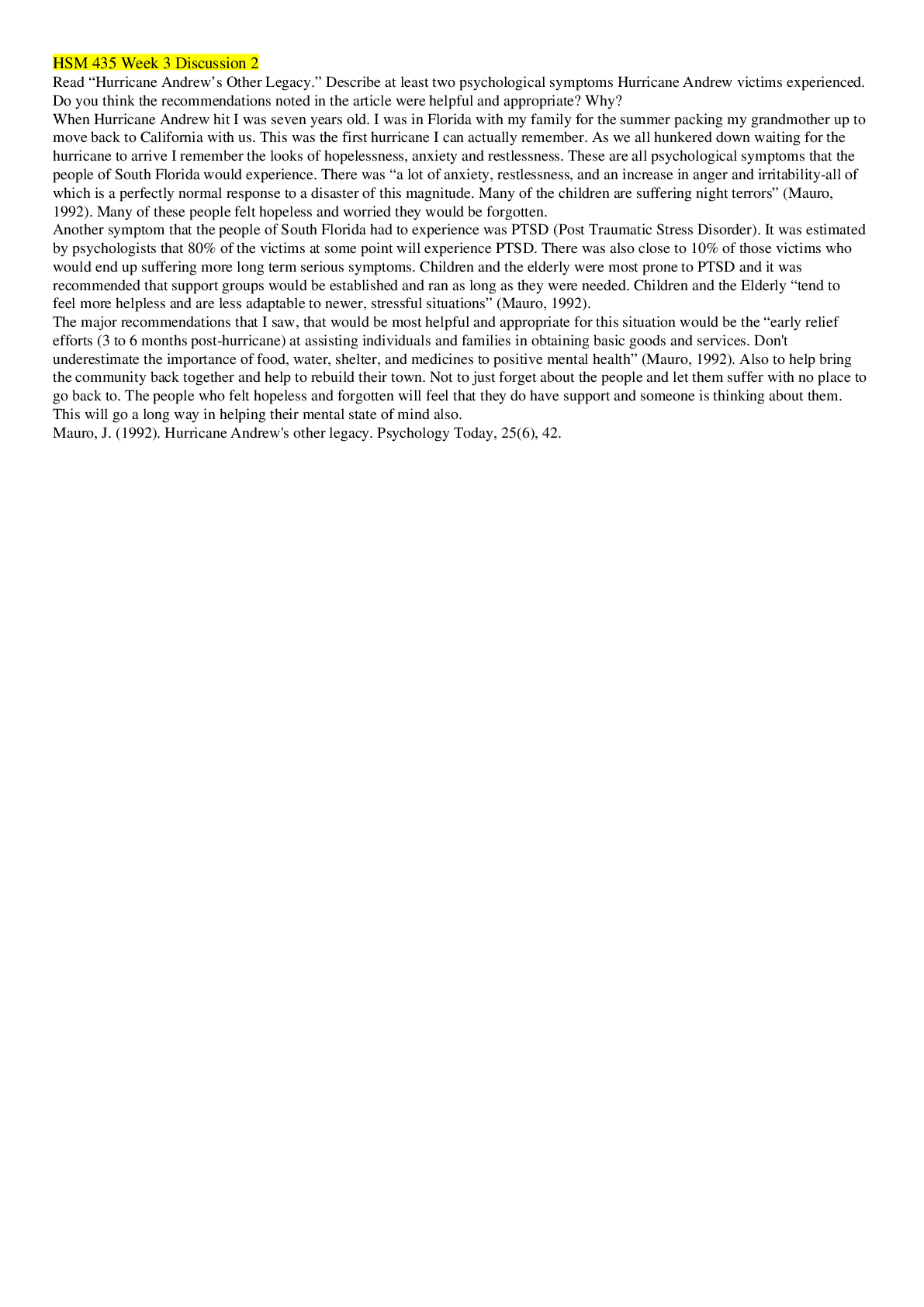
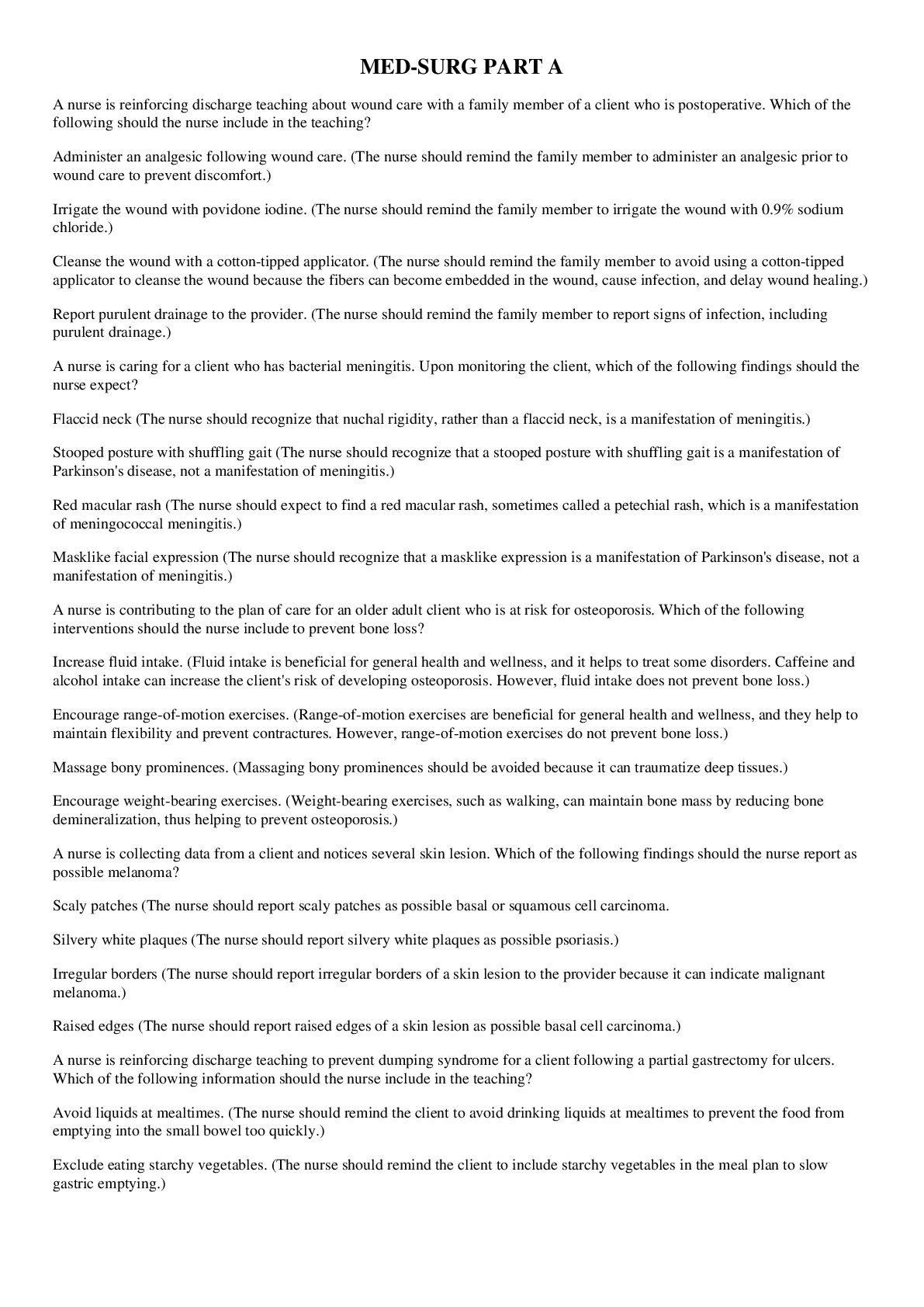


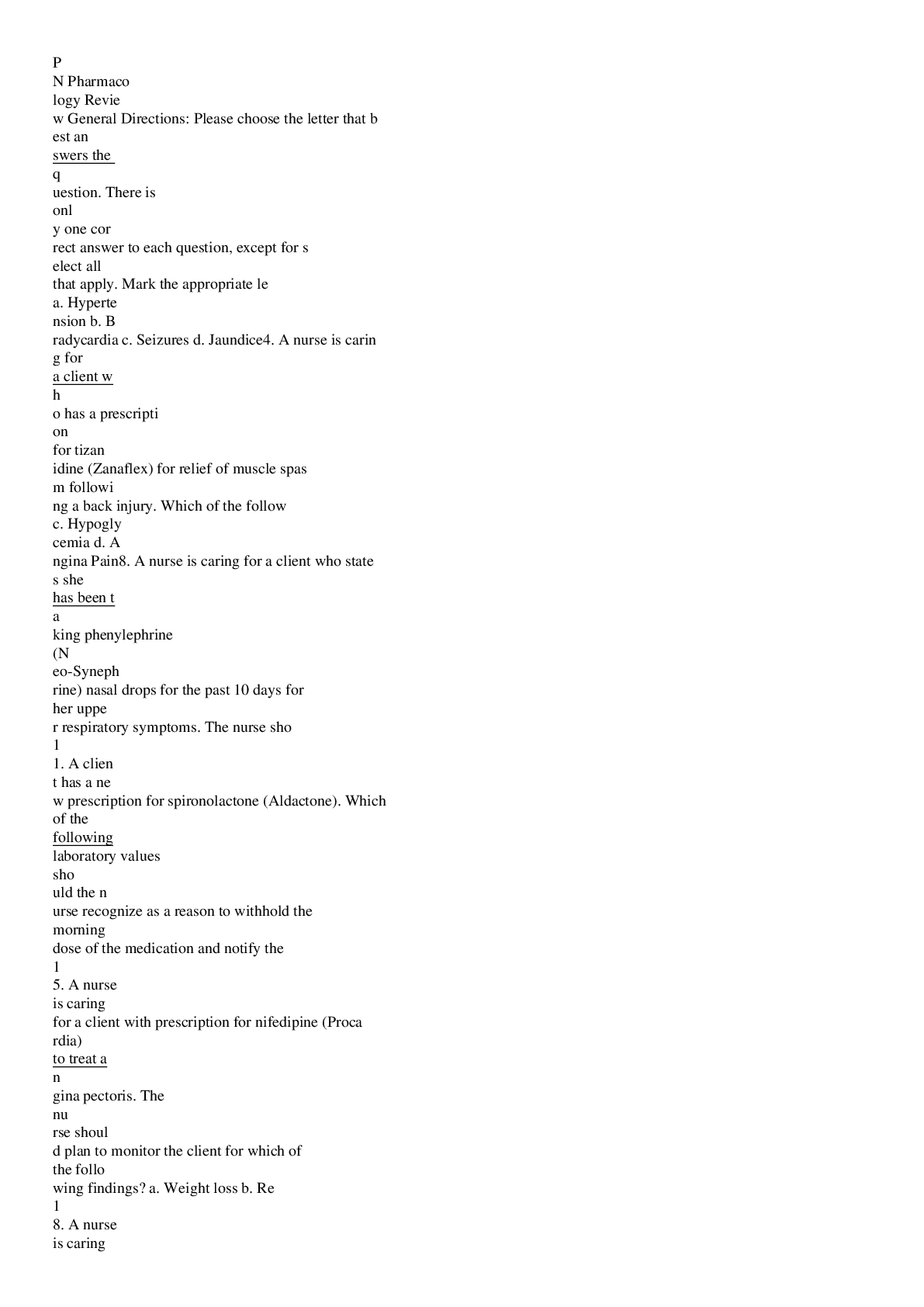
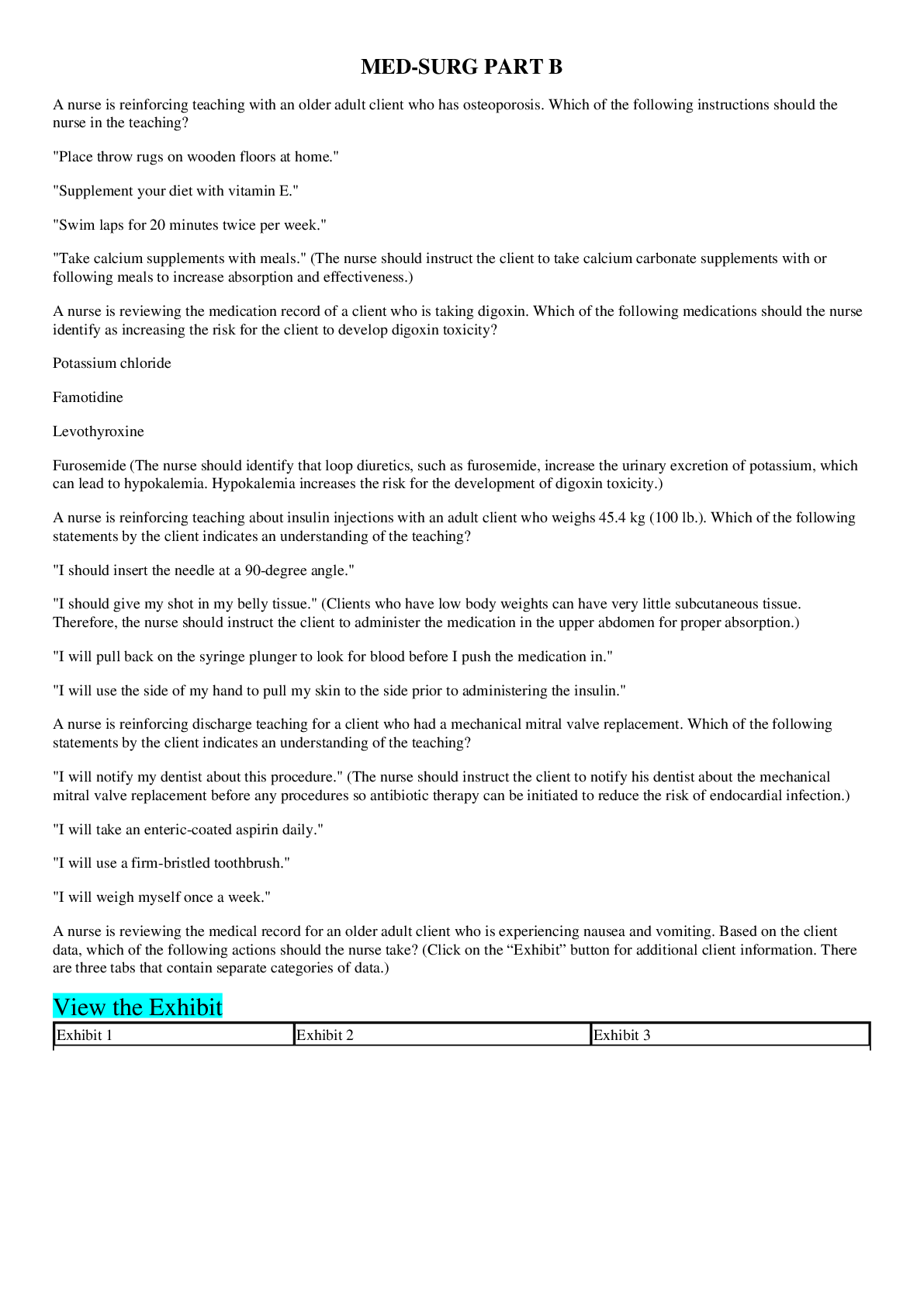
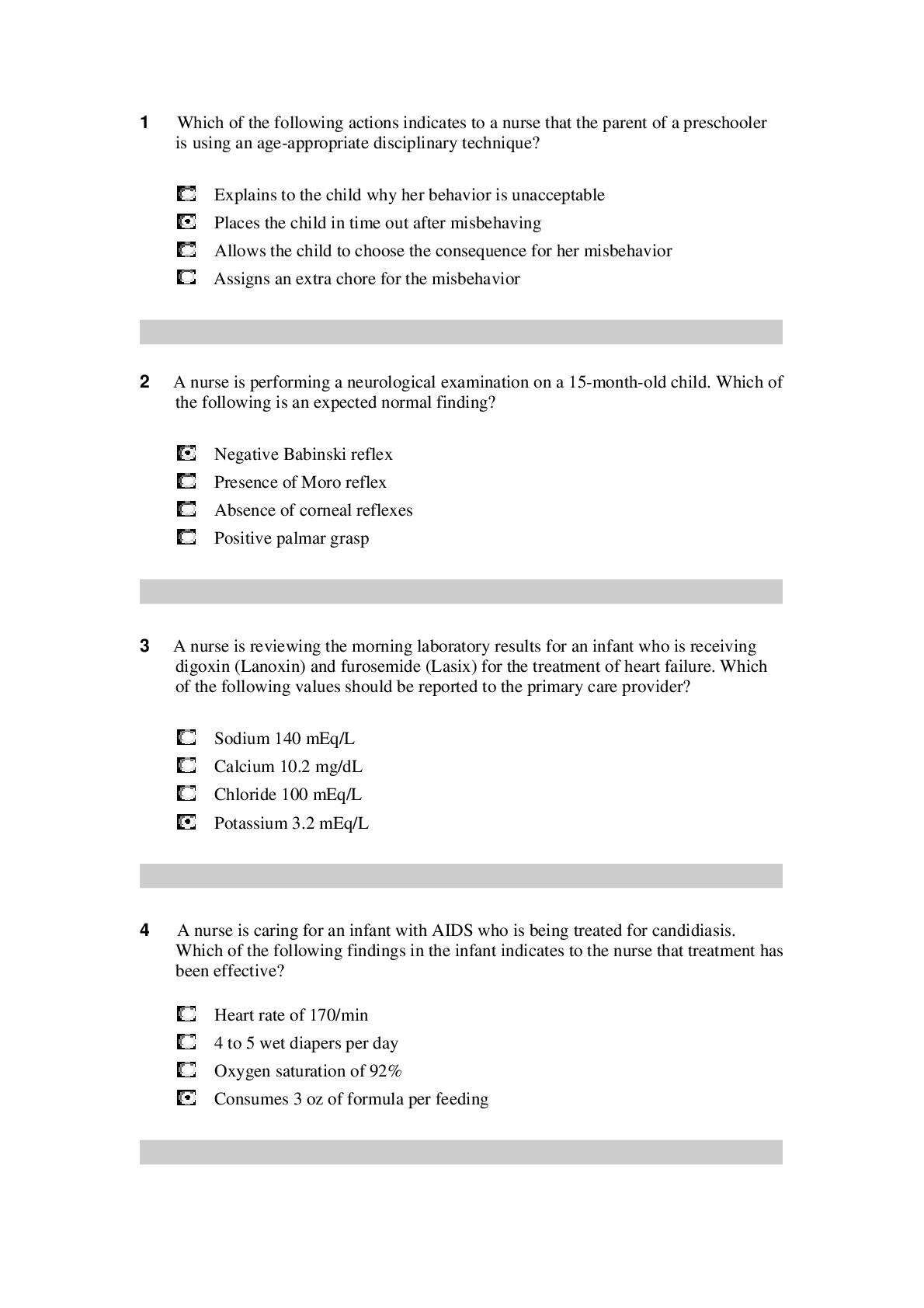
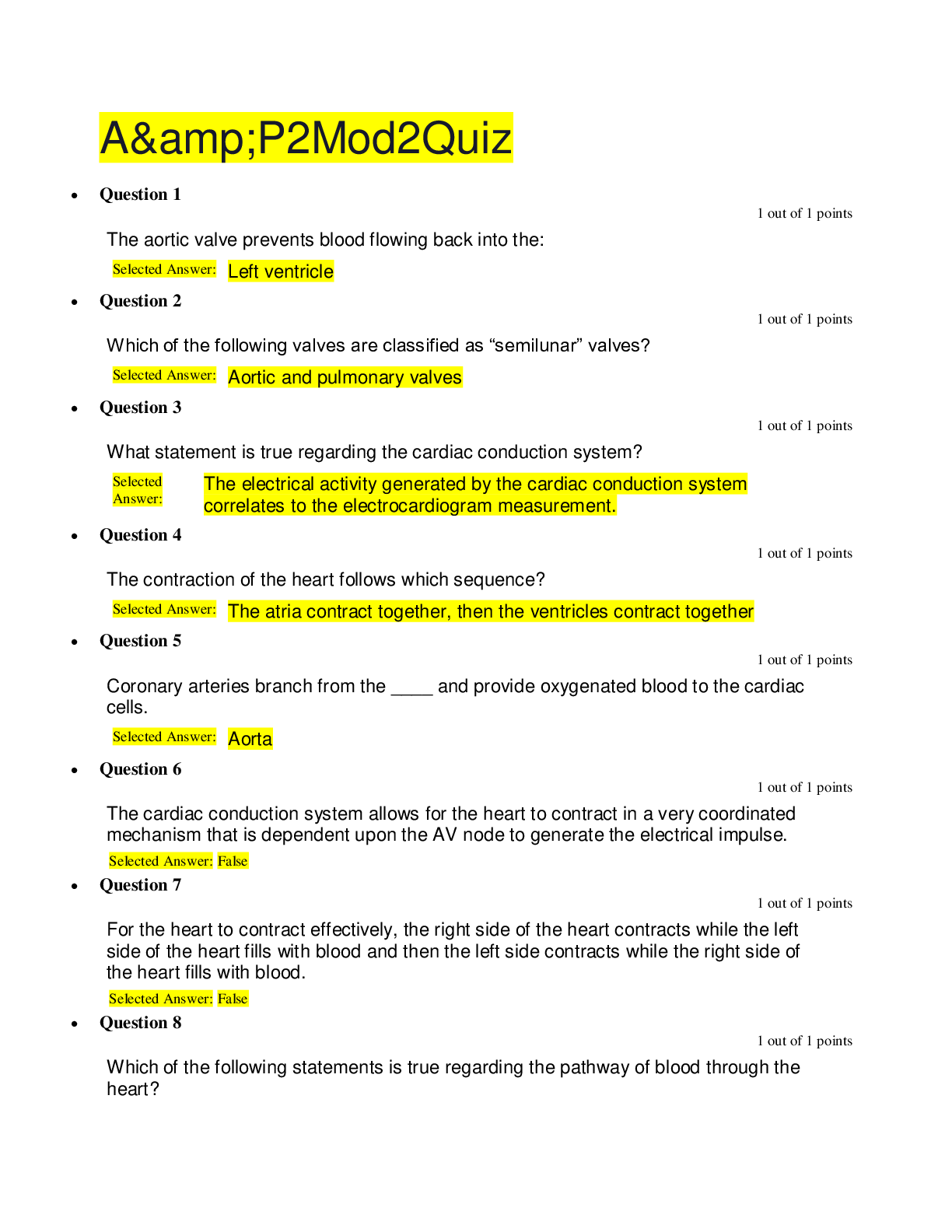
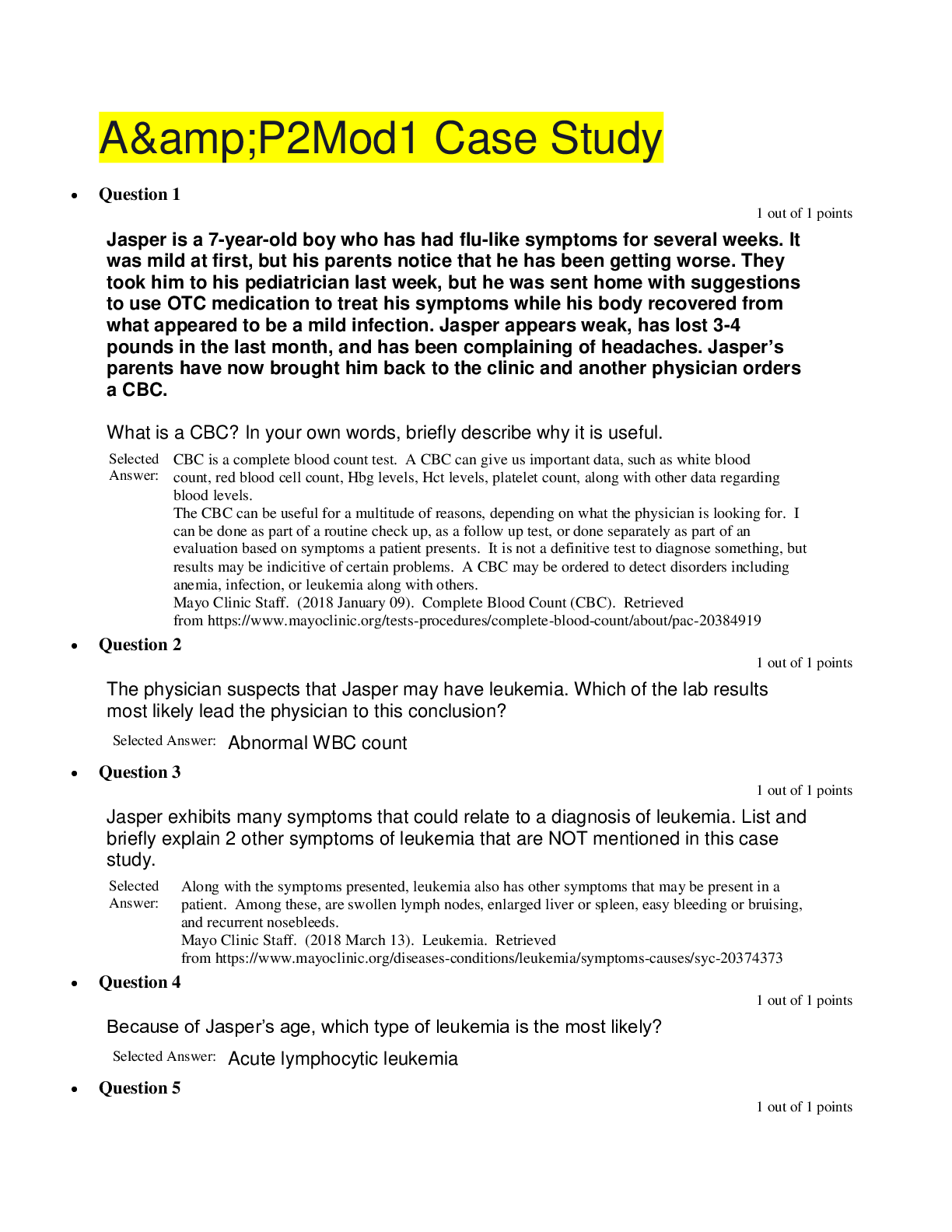
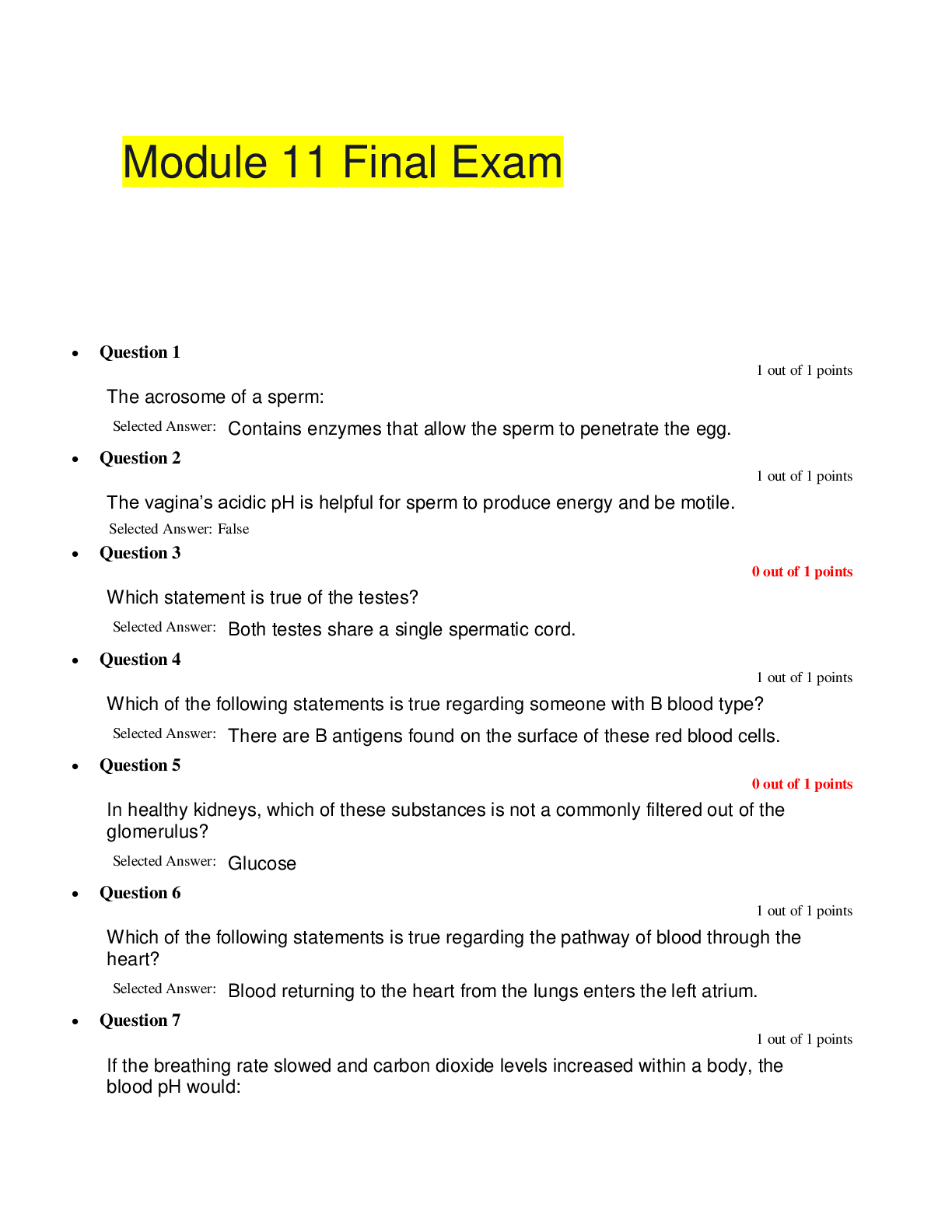







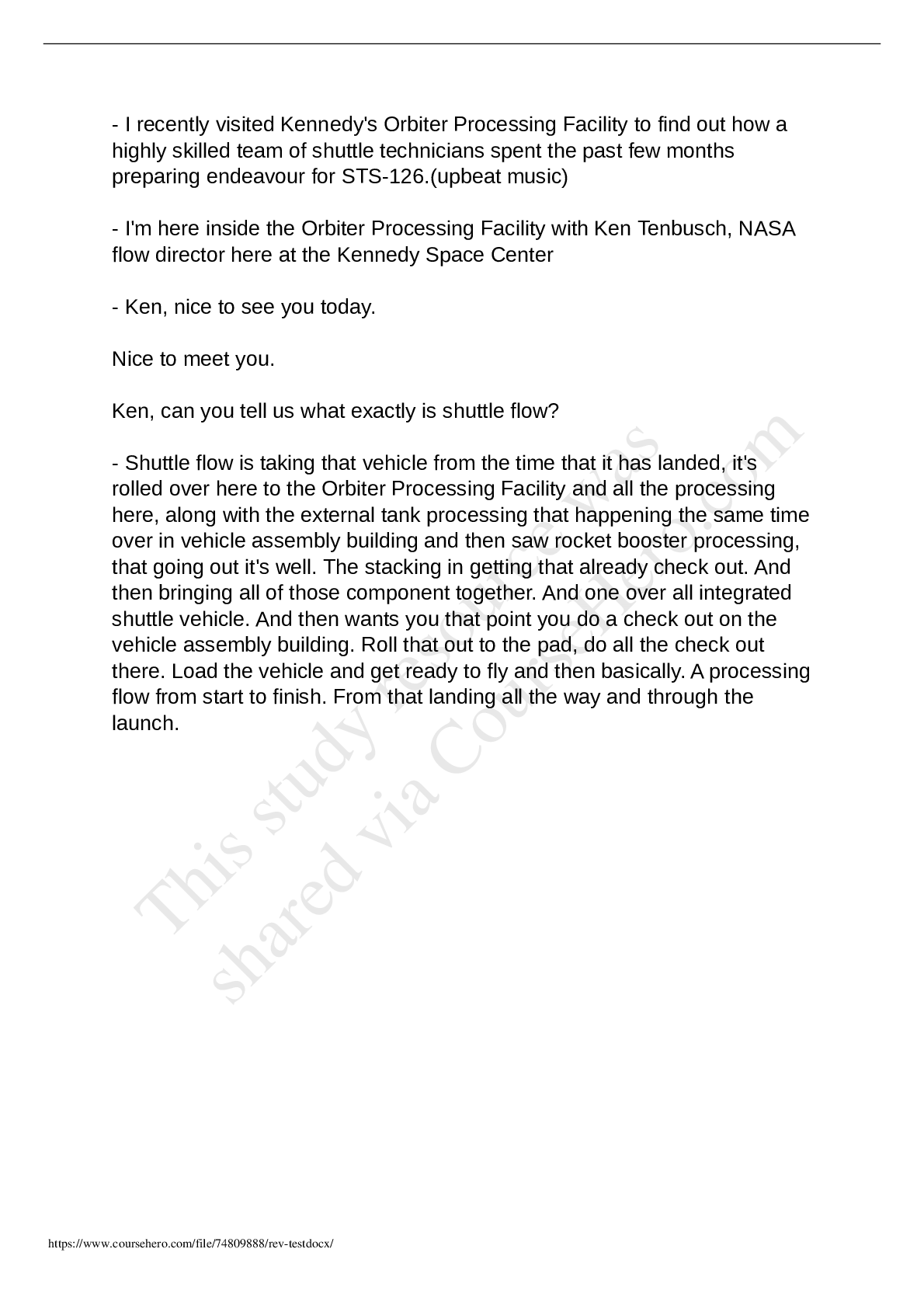

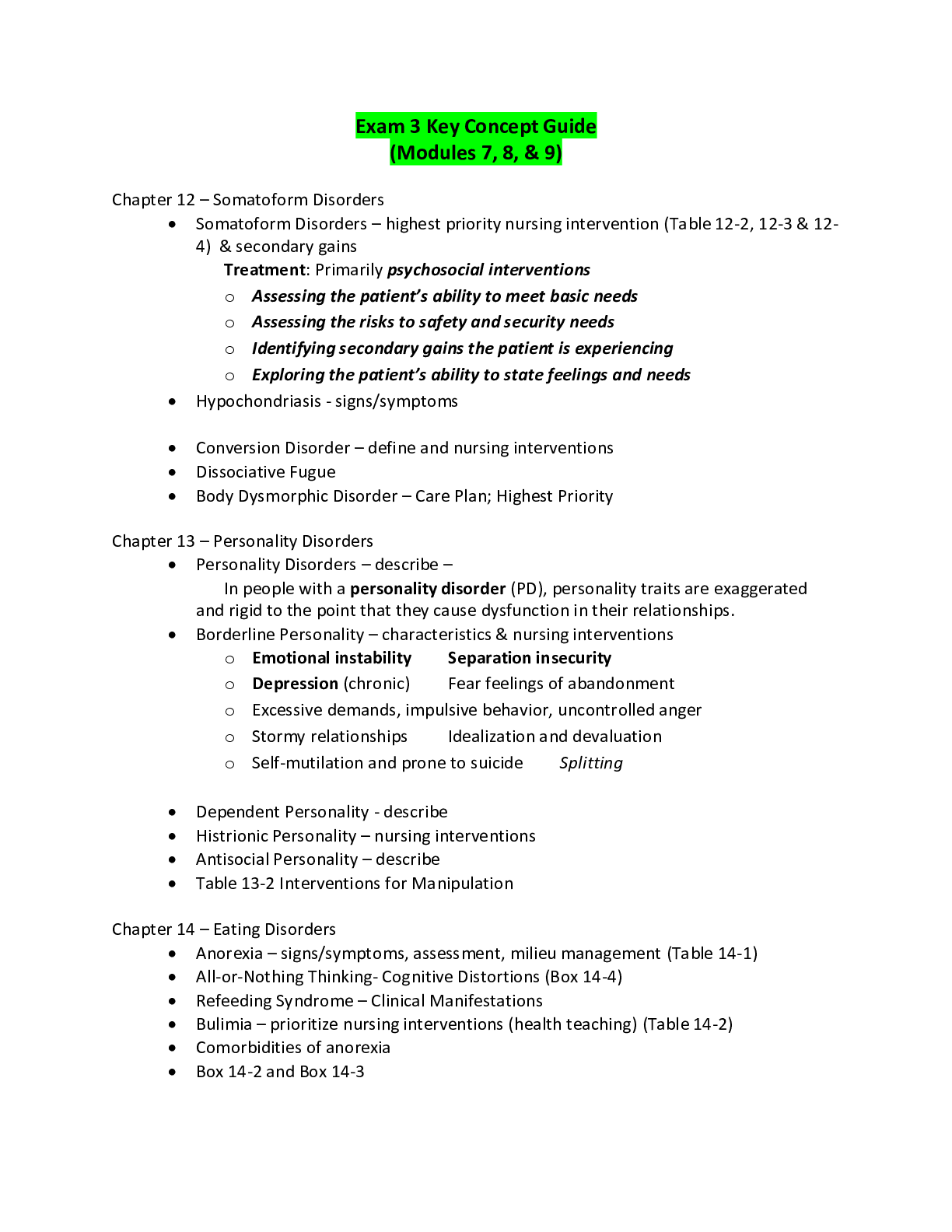
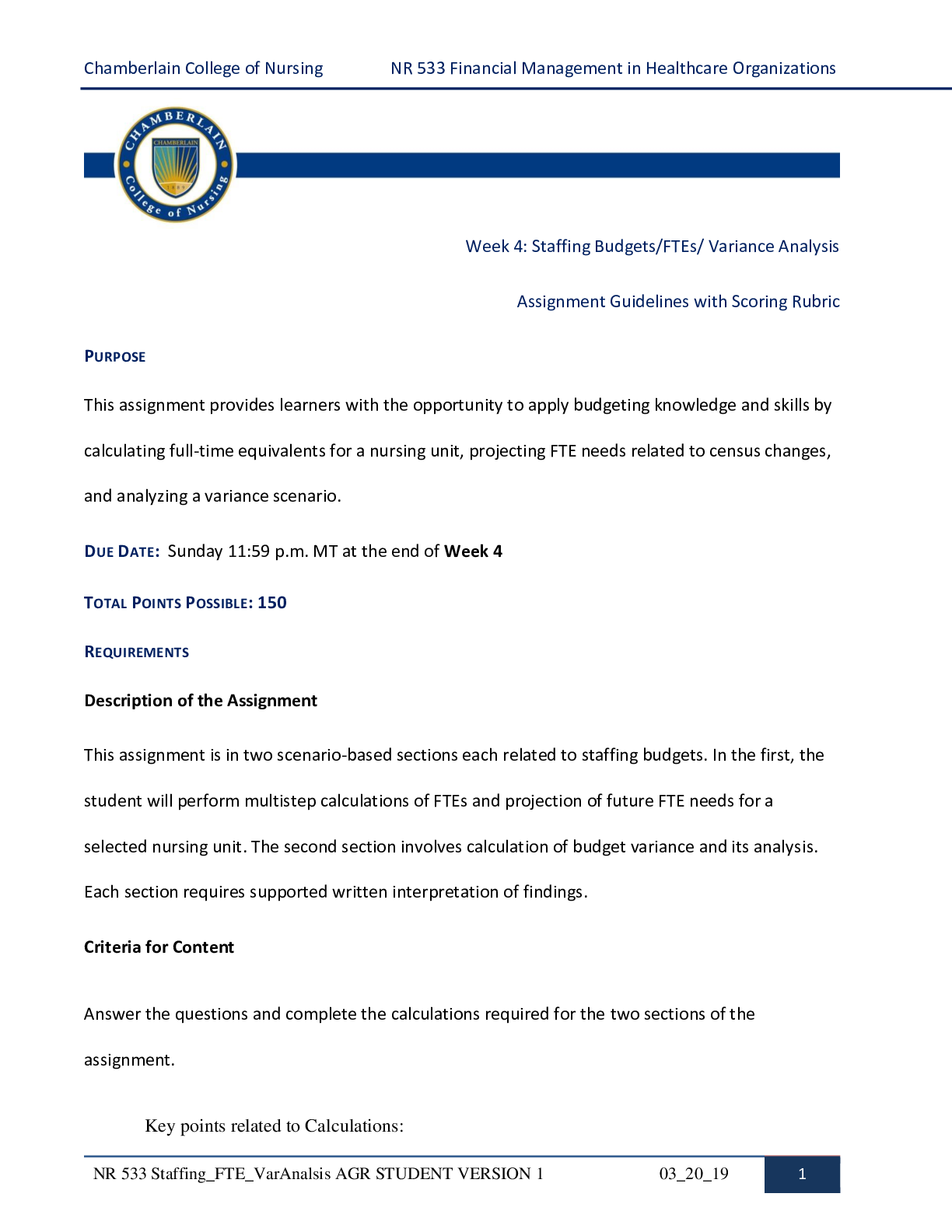


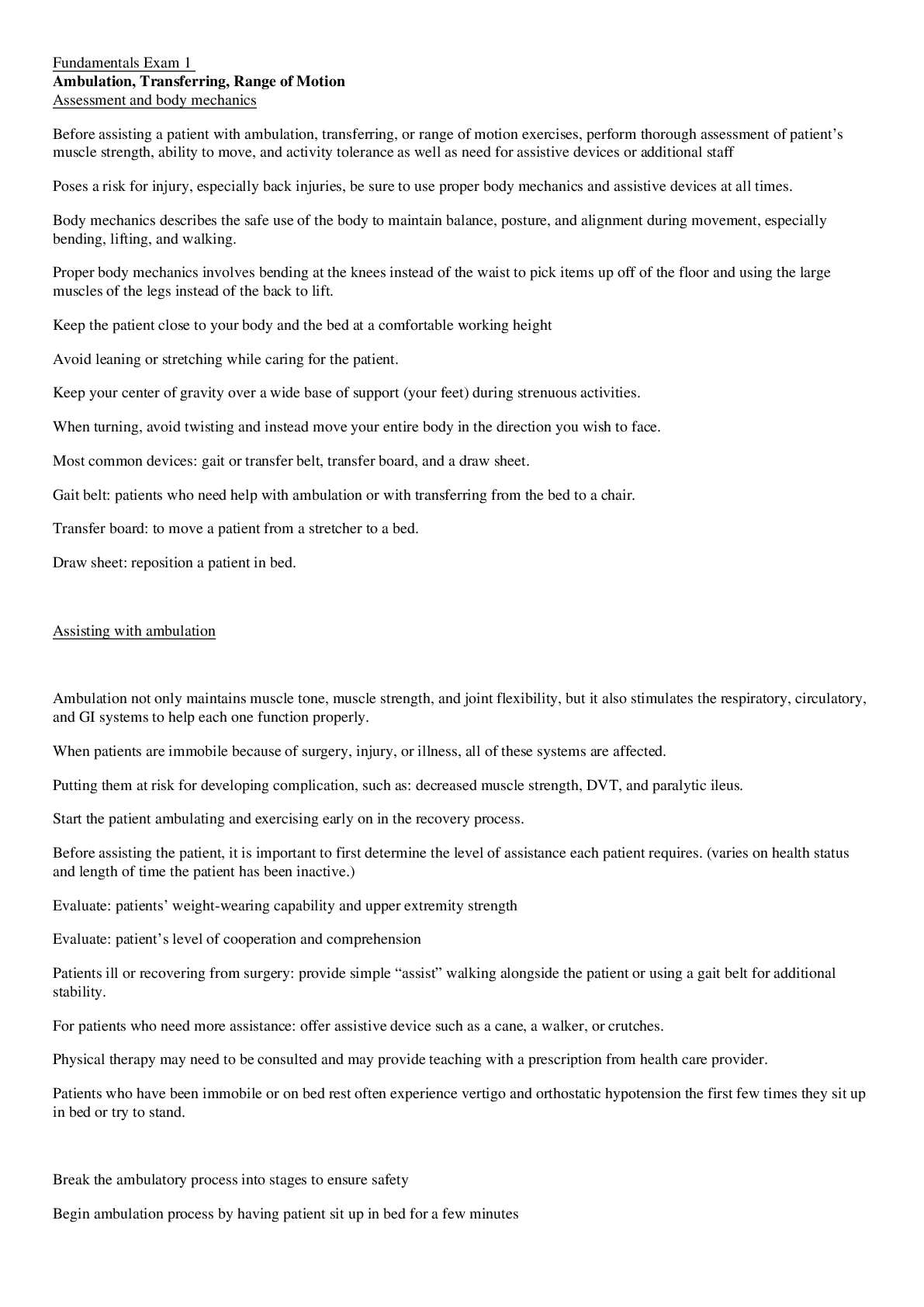

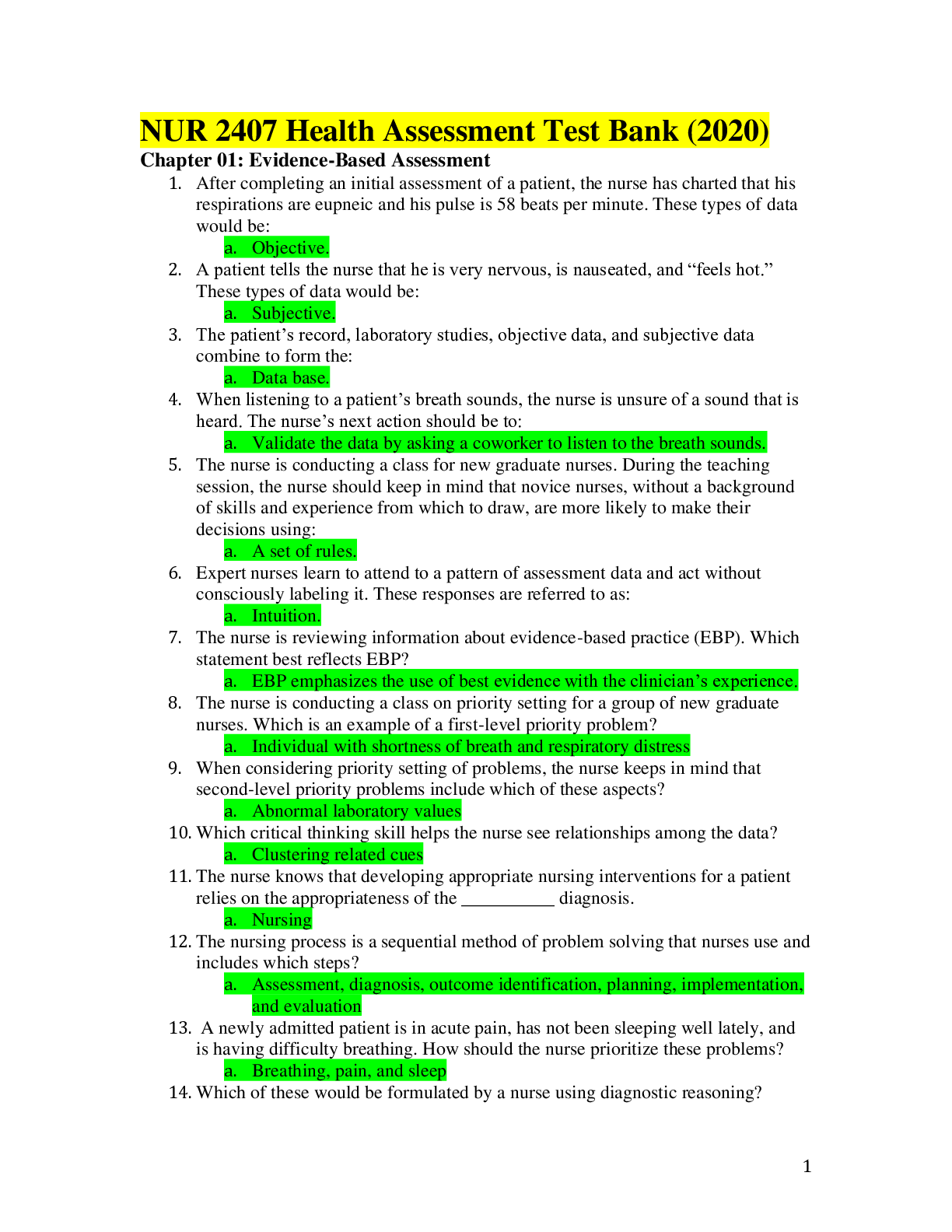
.png)

